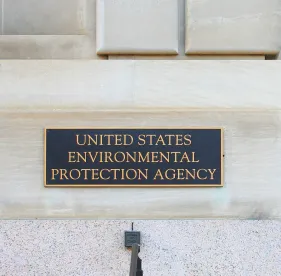The U.S. Environmental Protection Agency (EPA) has introduced an interim strategy for regulating Per- and Polyfluoroalkyl Substances (PFAS) in stormwater and wastewater discharges through its national permitting system that promises to have far-reaching impacts on regulatory compliance efforts in a number of industries. The EPA’s interim guidance, released November 22, provides recommendations from a workgroup established to develop a stopgap measure for addressing the presence of PFAS in water while a more comprehensive regulatory framework is developed.
The workgroup most notably recommends that National Pollutant Discharge Elimination System (NPDES) permit writers “consider” and “incorporate” PFAS monitoring requirements in point source wastewater discharge permits, as well as phased-in monitoring and pollutant control measures in stormwater and industrial discharge permits. Even further, it recommends the consideration of control or abatement measures where “authorized” for direct and indirect PFAS dischargers. Lastly, the workgroup encourages collaboration across federal and state levels to create best practices and deepen technical understandings through use of an “information sharing platform” and continuation of the workgroup.
The Interim Strategy will most directly impact certain federal facilities, as well as states for which the EPA is the permitting authority. This list includes Massachusetts, New Hampshire, New Mexico, the District of Columbia, and most U.S. territories. As current permits are reevaluated by the EPA, and new permits are requested, these new standards will begin to be implemented. Companies will need to evaluate in advance of these changes to stay on top of their PFAS compliance requirements.




 />i
/>i
